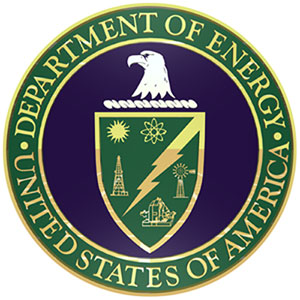 The U.S. Department of Energy (DOE) Wind Program is revisiting the conclusions from its 2008 study that contemplated the technological and regulatory road map for the U.S. wind industry to achieve 20% wind energy by 2030.
The U.S. Department of Energy (DOE) Wind Program is revisiting the conclusions from its 2008 study that contemplated the technological and regulatory road map for the U.S. wind industry to achieve 20% wind energy by 2030.
The landmark report, ‘20% Wind Energy by 2030: Increasing Wind Energy's Contribution to U.S. Electricity Supply’ released in May 2008, identified the steps needed to be addressed to reach the 20% goal, including reducing the cost of wind technologies, building new transmission infrastructure and enhancing domestic manufacturing capability.
Produced by the DOE and its National Renewable Energy Laboratory, Lawrence Berkeley National Laboratory and Sandia National Laboratories with the assistance of others including the American Wind Energy Association (AWEA), the report stated that reaching the 20% goal required more than 304 GW of installed wind capacity by 2030.
Jose Zayas, the DOE's director of the wind and water power technologies office, tells NAW that the intra-governmental initiative will take about ‘one calendar year’ to complete, adding that the updated report will include a road map to address the changes needed before wind energy can achieve increased levels of penetration within a national energy mix.
While Zayas states that the U.S. wind industry is currently tracking ahead of the near-term levels set forth by the 2008 report, upcoming milestones starting in 2016 require the U.S. to begin 16 GW of annual installed capacity. However, only twice in its history has the U.S. wind industry met or surpassed the 10 GW plateau.
For Zayas, a re-examination of the report provides an opportunity to reflect on where the wind industry is five years later. He says one of the goals of the 2008 report was to look at what was feasible for wind energy if it had some level of policy certainty. Notably, he stresses, the DOE's goal is to study U.S. energy policy as opposed to promoting it.
‘Seeing what the wind industry did last year tells me that this industry shows an amazing ability to scale,’ he explains. He credits improving turbine technology, such as longer rotors and taller towers, which aids the siting of wind turbines in areas that have less than robust wind resources.
Some challenges faced by the wind industry in 2008, he says, turned out not to be as foreboding as originally thought.
‘Transmission [availability] was a big concern back then,’ he recalls. ‘However, since then, there have been enough transmission lines built to carry the equivalent 60,000 MW of renewable energy.’
Also, several macroeconomic forces have changed in ways once thought unimaginable five years ago. Zayas says the recent economic crisis has brought about changes in behavior and efficiency.
While the 20% Wind Energy by 2030 report predicted that energy demand in the U.S. would continue to grow each year, Zayas says statistics from the U.S. Energy Information Administration show that household energy consumption actually declined between 2005 and 2009, industrial energy consumption declined and total energy and electricity consumption declined.
‘The fact is that we consume less energy today than in 2008,’ he says, citing advances in energy efficiency and usage.
While the 2008 report noted that 20% wind energy equated to 304 GW of installed capacity, Zayas is avoiding putting a final tally this time around because too many questions remain.
‘How do we reflect on offshore wind?’ he asks. The 2008 report envisioned 54 GW of installed capacity from offshore wind farms emanating off the coast of the U.S. To date, the U.S. has not installed a single offshore wind farm. Some say the permitting process to approve offshore wind farms remains too long; others cite the steep costs involved, others both.
‘We want to deal in the realities [of the technology] and we also want to be sensitive to the concerns of the DOE's sister agencies,’ he says.
Above all, the 2008 report showed that increased levels of wind penetration was not so far-fetched, recalls Rob Gramlich, interim chief executive officer at AWEA.
‘The [DOE] report put us on the map,’ Gramlich says, recalling that at the time, cumulative U.S. installations were only 10 GW. ‘It provided a road map for what needed to be done.’
With regard to timing, Zayas emphasizes that the agency's ‘one calendar year’ goal is the target for the draft report, not for the final publication.
‘We are working closely with the Wind Energy Foundation and other stakeholders on the draft and hope to have the draft report out for comment among a wider group of industry and agency representatives by next year,’ he says. ‘But given the number of concurrences we'll need from other agencies, it will likely take a little longer before we'll be able to publish the final version.



